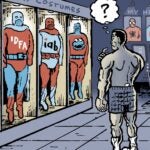 A handful of major news companies are trying to figure out how live news broadcasts fit in digital media.
A handful of major news companies are trying to figure out how live news broadcasts fit in digital media.
The challenges are steep. Streaming live news requires large, ongoing investments, and it’s difficult to monetize audiences, as live news can be a hotbed of brand safety concerns.
Plus, Facebook’s recent algorithm shift lowered the ratio of news content on the platform. Co-founder and CEO Mark Zuckerberg said at the time the change was meant to elevate content that drives positive sentiment.
“If you think about the mission of a news reporting company, sometimes the news isn’t going to entertain people or make them happy,” said Yaser Bishr, executive VP of digital media at Al Jazeera Networks.
Can it pay?
Late last year, Bloomberg unveiled its Twitter-based news channel TicToc, which is the only social news network that broadcasts 24 hours a day.
But TicToc is nothing like a linear, 24-hour news network. It’s built more as a repository for video packages shown throughout the day. When news breaks, the newsroom jumps into action.
For Bloomberg, the goal is to win early mind share among online news consumers and to use it to pull viewers into owned-and-operated sites or apps, where there’s packaged video content and video ads.
But monetizing live news itself can be difficult or downright counterproductive.
TicToc gets large live audiences when big news breaks, but it gets more bang for the buck with on-demand clips and short packages that people can watch asynchronously during the day, said M. Scott Havens, Bloomberg’s global head of digital.
TicToc’s live coverage of breaking news is often related to natural disasters, terrorist attacks or general tragedy, which is unappealing to advertisers, Havens said.
Linear broadcasters have an easier time anticipating potential brand safety issues, like pulling an airline commercial if they know it’s going to follow a segment on a plane crash.
And viewers who are watching on their phones, tablets or laptops are turned off by ads in a way that linear TV news channels aren’t. Plus, digital viewers might be using ad blockers.
But Bloomberg is still committed to live news online because of the gigantic opportunity to cement itself as the go-to online source when news breaks, Havens said.
Online audiences accumulate extremely quickly compared to linear.
In linear TV, conventional wisdom suggests that it takes about 25 minutes for a big audience to show up for breaking news events, said Dan Colarusso, Reuters’ executive editor and digital head of global programming.
For live mobile coverage, especially after the explosion of news notifications, scaled audiences can be aggregated in a minute or two.
Platform partners … or prisoners
When advertisers can plan for positive breaking news and partner with YouTube, Facebook or Twitter, digital streams can pull in live audiences that match top linear news programs. The lack of ad inventory can be supplemented with a presenting sponsor, as CNN did with Volvo during its eclipse coverage.
But live news can’t be seen without a place to host it – and often that means working with the social media platforms, where ensuring discoverability can be expensive.
Competing live news streams and on-demand videos often end up “mixed up and pushed to the feed,” Bishr said.
So without a pre-planned promotional campaign orchestrated with the social media platform and day-of ad spend to drive traffic, live news is easily buried or swamped by topical on-demand content.
Also, social media platforms don’t always present the most seamless interface for live news. Facebook is building news content in Facebook Watch, the platform’s video hub, but Bishr said it’s a big change in habit to get people accustomed to scrolling through their news feeds to click on the Watch section, then to a news section and then to a media company’s page.
The ideal situation is for publishers to own their own live news platform rather than rely on Twitter or Facebook.
Reuters prioritizes driving viewers from social or search channels to Reuters TV, its OTT app with live broadcast, Colarusso said. Social platforms may generate more ad revenue per view and high raw viewership numbers, he said, but viewers of Reuters TV are higher-value: They tend to watch for longer periods of time and become return viewers, while social platforms may include tens of thousands who merely zipped past in their feed.
The Reuters TV app’s superior engagement and attention metrics “are what we hope to monetize when the platform has a little more scale to it,” Colarusso said.
So publishers like Reuters and Bloomberg know that while their investments might not pay dividends today their learnings could advantage them in the future, especially when platforms start to aggressively compete for exclusive content.
Exclusive distribution rights are becoming a more common feature in platform distribution deals or content partnerships, Havens said, and “usually come with better terms than the platform’s undifferentiated content.”
But exclusivity can also box in media companies. Snapchat attaches exclusive rights to many media partner programs in the app, for example, but it’s hard to promote content and build an audience if you can’t feature the shows elsewhere.
And Bloomberg’s TicToc could theoretically be distributed on a platform other than Twitter, but a big part of TicToc’s value is derived from Twitter, which often autoplays TicToc in desktop sidebars or promotes the stream atop user feeds.
BuzzFeed produces a daily live news program on Twitter called “AM to DM,” and the social platform “provides tremendous support and investment,” said Cindy Vanegas-Gesuale, the publisher’s head of programming.
As with Bloomberg’s TicToc, “AM to DM” could be a vehicle for BuzzFeed to expand the company’s live video footprint but shows how hard it is for news companies to stand up live online news without platform support.
The current model must change for live news to work online, Bishr said.
The cost of producing live news is very high and the cost of hosting and streaming is small, he said, but profit is accruing to hosting platforms and not publishers, which “should be compensated differently.”













